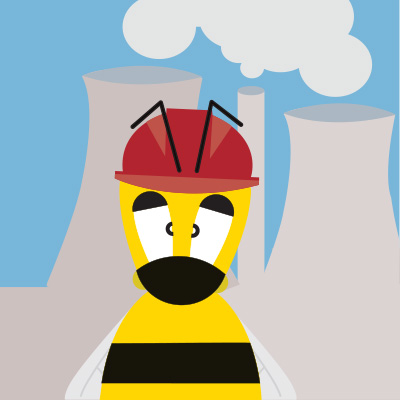Site Prices Update
Last Updated28th June 2022
All calculations on this site are based on current fuel prices, they are checked regularly and calculations are automatically updated.
The costs calculated based on these fuel prices should be regarded as 'good estimates', given that fuel prices vary in different parts of the county and at different time of the year.
The calculations also have different levels of accuracy depending on the nature of the calculation. For example calculating the energy use of a known power output TV is very easy compared to calculating the effect on energy savings when insulating a cavity wall.
Site Calculations
Set Your Own Prices
User PricesFor several of the fuel prices on this site you can now set your own prices and all the calculations on the site will adjust accordingly.
Set Prices
At Confused About Energy we aim to provide practical, impartial advice on all aspects of energy usage, climate change and ways to save money on energy bills.
All calculations on this site are based on current fuel prices they are checked regularly are automatically updated and were last changed on:-
28th June 2022
The costs calculated based on these fuel prices should be regarded as 'good estimates', given that fuel prices vary in different parts of the county and at different time of the year.
The calculations also have different levels of accuracy depending on the nature of the calculation. For example calculating the energy use of a known power output TV is very easy compared to calculating the effect on energy savings when insulating a cavity wall.
Site Calculations
| Electricity | £0.271 per unit (1 kWh) |
| Economy Electricity | £0.094 per unit (1 kWh) |
| Gas | £0.072 per unit (1 kWh) |
| Domestic LPG | £0.122 per unit (1 kWh) |
| Heating Oil | £0.104 per unit (1 kWh) |
| UK Grid CO2 Emissions | 0.233 kg per kWh used |
The main units used in this site are in the table below, For a complete explanation of power and energy Read More.
| Unit | Name | Detail |
|---|---|---|
| W | Watt | Unit of Power |
| kW | Kilowatt | 1000 watts |
| kWh | Kilowatt hour | Measure of Energy |
| L | Litre | Measure of Volume |
Please use twitter to ask a question Message @@EnergyThinking
The first realisation is that in reality we need to present the full greenhouse gas perspective and for transport there are three major green house gases, these are CO2, CH4 and N2O. Looking at the data below you will notice that all the data is presented in terms of CO2e. CO2e is the is the CO2 weight equivalent of the greenhouse gas warming potential of CH4 and N2O. For more on this have a look here… Greenhouse Gases and Carbon Dioxide Equivalence
The first table gives the CO2e emissions for various transport fuels including supply chain emissions. The value for electricity is based on the current UK national grid emissions. Sources for this data are at the bottom of the page.
| Fuel | Emissions kg CO2e / kWh used | Supply Chain Emissions kg CO2e / kWh | Total kg CO2e / kWh |
|---|---|---|---|
| Petrol | 0.24 | 0.05 | 0.29 |
| Diesel | 0.254 | 0.056 | 0.31 |
| Aviation Spirit | 0.241 | 0.052 | 0.293 |
| Aviation Turbine Fuel | 0.247 | 0.05 | 0.297 |
| Electricity | 0.233 | ||
| Food More on Diet and Greenhouse Gas Emissions | 1.5 |
The next table is an extension of the table in the energy of transportation section. We include in it the approximate amount of CO2e you kick out as a result of travelling the way you do. The numbers include supply chain CO2e in all cases. It should be immediately obvious from the table that your average private jet and cruise liners are not too good for the environment and perhaps 4x4 cars are overindulgent. Trains are pretty good especially when electrified and full (just how I hate them!).
Air Transport is often cited as terrible for the environment and it is not so great, but if we are to fly then there is little choice but to burn hydrocarbon based fuels, usually fossil derived. You do not get sensible electrically powered aircraft, you simply cannot deliver the power required to fly a jet with a battery.
To me it would be sensible to focus carbon reduction initiatives to transport on land where it is much easier to develop and use more electric vehicles. For this to be effective the grid which powers these vehicles must not emit greenhouse gasses, to do this we will require carbon capture technologies on fossil fuel power stations, more renewables and other carbon free methods of generating electricity.
If you wish to look at what you could do reduce your impact on travel perhaps consider the following.
- Walk more
- Cycle
- Get a hybrid bike?
- Car sharing
- Live closer to work
- Swap the 4x4 for a smaller car
- Greater use of public transport
- Fly a little less – and go for more than just a few days!
- Consider an electric car
- Use your private jet a little less, I have moth-balled mine :)
| Mode | Occupancy | Fuel | Energy (kWh/ 100-person-km) | Kg CO2e/ 100-person-km | Kg CO2e/ 100-person-mile |
|---|---|---|---|---|---|
| Walk | 1 | Food | 6 | 9 | 14.5 |
| Bicycle | 1 | Food | 3 | 4.5 | 7.2 |
| Motorised Bike | 1 | Food/Electricity 1:3 | 9 | 5.9 | 6.8 |
| Motorbike | 1 | Petrol | 40 | 11.6 | 18.6 |
| Petrol Car | 1 | Petrol | 90 | 26.1 | 41.9 |
| Diesel Car | 1 | Diesel | 70 | 21.6 | 34.7 |
| Electric Car | 1 | Electricity | 30 | 7 | 11.3 |
| Large 4x4 Car | 1 | Diesel | 110 | 33.9 | 54.5 |
| Local Bus | Variable Average | Diesel | 9.9 | 15.9 | |
| Coach | Full | Diesel | 5 | 1.5 | 2.5 |
| Transit (Metro,Tram) | Variable Average | Electricity | 12 | 2.8 | 4.5 |
| High Speed Train | Full | Diesel | 9 | 2.8 | 4.5 |
| High Speed Train | Full | Electricity | 4 | 0.9 | 1.5 |
| Small Jet (Learjet) | 8 Passengers | Aviation turbine Fuel | 150 | 44.5 | 71.6 |
| Small Turboprop | 6 Passengers | Aviation Spirit | 60 | 17.6 | 28.3 |
| Helicopter | Variable Average | Aviation Spirit | 150 | 44.0 | 70.8 |
| Jumbo Jet | Full | Aviation turbine Fuel | 42 | 12.5 | 20.0 |
| Sea Bus | Variable Average | Diesel | 21 | 6.5 | 10.4 |
| Ocean Liner | Full | Diesel | 105 | 32.3 | 52.0 |
to be crude the food data does not include methane emissions from your flatulence!
Some Useful Reference Links
https://www.epa.gov/sites/production/files/2015-12/documents/emission-factors_nov_2015.pdfhttps://carbonfund.org/how-we-calculate/
https://www.withouthotair.com/c20/page_128.shtml
https://en.wikipedia.org/wiki/Energy_efficiency_in_transport
http://www.carbon-calculator.org.uk/
http://shrinkthatfootprint.com/food-carbon-footprint-diet
https://www.sustainablebusinesstoolkit.com/difference-between-co2-and-co2e/
https://www.ipcc.ch/publications_and_data/publications_ipcc_fourth_assessment_report_synthesis_report.htm
https://www.gov.uk/government/publications/greenhouse-gas-reporting-conversion-factors-2016
https://www.gov.uk/government/uploads/system/uploads/attachment_data/file/553488/2016_methodology_paper_Final_V01-00.pdf
Locally Stored Reference Material
2016_methodology_paper_Final_V01-00.pdfghg-conversion-factors-2016update_MASTER__links_removed__DECC_Standard_Set.xls
World Climate Change Metrics
(2021)
↑
Annual
+11353 TWh↑
Decade
2040 149000 TWh to 171000 TWh
(2021)
↑
Annual
+2.6 Gt↑
Decade
2040 36 Gt to 46 Gt
(2021)
↑
Annual
+835 million↑
Decade
2040 8.45 billion to 9.5 billion
(2021)
10+Gt CO2
↑
Annual
+1168 TWh↑
Decade
2040 10000 TWh to 13000 TWh
(2021)
↑
Annual
+24 ppm↑
Decade
2040 450 ppm to 500 ppm
(2022)
↑
Annual
+0.26°C↑
Decade
2040 1.5°C to 2.5°C
(2020)
–
Annual
+46.5 mm↑
Decade
2040 150 mm to 200 mm
(2020)
↓
Annual
0.95 million km2↓
Decade
to 2 million km2
2040 2 million km2
to 0 million km2
(2020)
↓
Annual
-1600 Gt↓
Decade
2040 -7000 Gt to -10000 Gt
(2020)
↓
Annual
-2500 Gt↓
Decade
2040 -7000 Gt to -10000 Gt
Each Decade
↓
Decade
(2019)
↑
Annual
+2169 TWh↑
Decade
2040 9000 TWh to 12000 TWh
(2018)
↑
Annual
0.96 Gt↑
Decade
2040 5.4 Gt to 7.2 Gt
≅4.6 GtCO2 emissions prevented
Example 50% gas power generation substituted with renewables
≅2 GtCO2 emissions prevented
≅3.7 GtCO2 emissions prevented
Example 50% gas power generation with CCS
≅1.6 GtCO2 emissions prevented
(2017)
↑
Annual
543 TWh↑
Decade
2040 1250 TWh to 2200 TWh
(2015)
↓
Annual
0.336 million km2↓
Decade
to 39.7 million km2
2040 39 million km2
to 39.5 million km2
























Comments and Questions